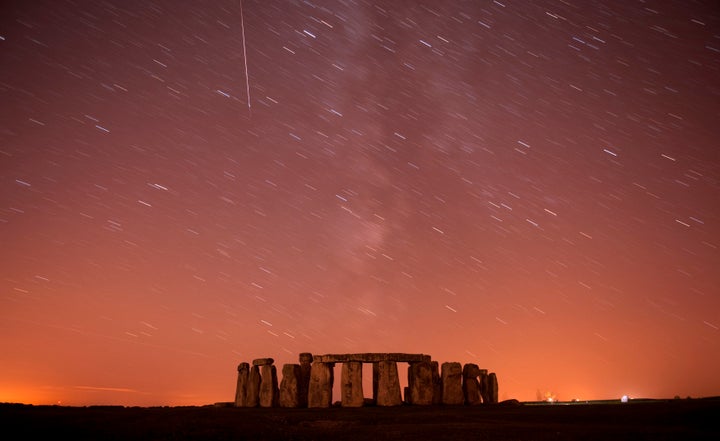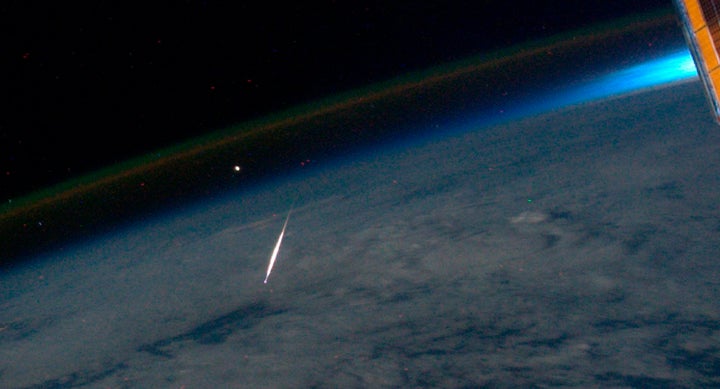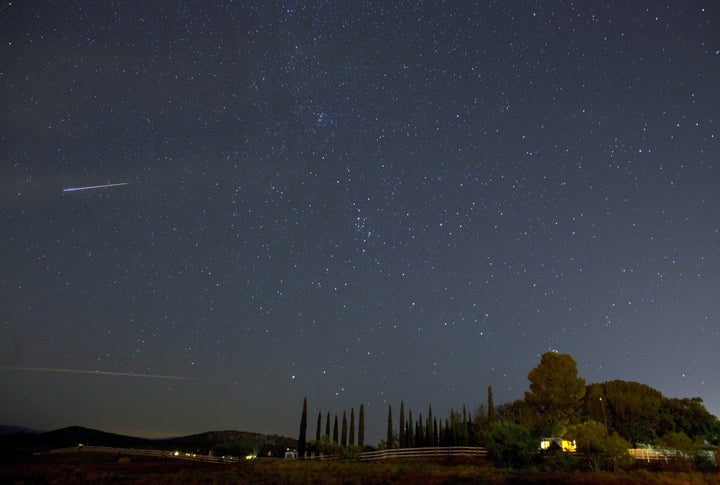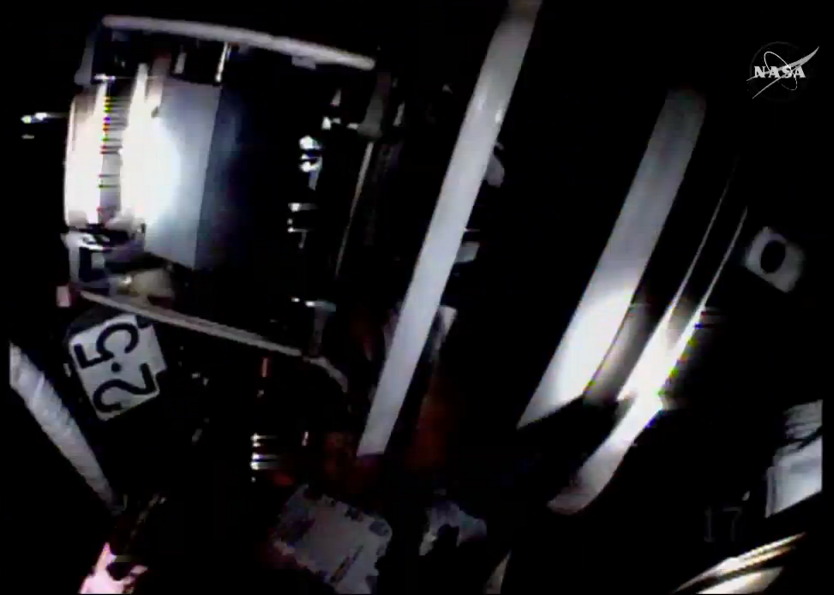It’s that time of year again, when the Perseids meteor shower will be shooting across our skies and we’ll crane our necks to try and catch a glimpse.
The Met Office says the best time to view the meteor shower in 2016 is the night of the 11th and the morning of the 12th August.
The Perseid meteor shower is generally regarded as the brightest in the calendar and NASA calls it “reliably active” so it’s a good opportunity for amateurs to do some stargazing.
Where is the best place to watch the Perseids meteor shower in the UK tonight?
Luckily for stargazers in the UK, because the shower originates in the constellation of Perseus, it is most easily visible in the northern hemisphere.
Robin Scagell, vice-president of the Society for Popular Astronomy told The Huffington Post UK: “Its best to watch them from the countryside but even in town, these meteors are bright enough for a few to be visible.”

“The moon is out of the way which makes a lot of difference because the sky will be much darker all night. For every bright shooting star you see, there are always fainter ones, and this will make it easier to see the fainter meteors and ring up the numbers.”
A live stream will be available on the NASA website, if you don’t have the right conditions to watch it in person.
What is the Perseids meteor shower?
The Perseid meteor shower is a result of debris falling from the tail of the Swift-Tuttle comet and bursting into the earth’s atmosphere causing tails of light to appear across they sky.
The Swift-Tuttle comet (which has an orbit period of 133 years) creates small particles of ice and dust (as small as a grain of sand) and these enter the earth’s atmosphere as meteors.
If particles are any larger than a grain of sand, they will produce a fireball and a meteor train (the afterglow).
Most of the particles have been part of the Perseid cloud – the stream of debris – for thousands of years.

Why is 2016 set to be such a good year for the Perseid shower?
This year is predicted to be an even more spectacular display than usual and astronomers say there are set to be up to 100 meteors per hour – double the usual rate.
Head of NASA’s Meteoroid Environment Office, Bill Cooke, explained to EarthSky why this was happening: “Over time, the gravitational influence of Jupiter and other giant planets (but mainly Jupiter) changes the particle orbits, and as a result, their close approach distances to Earth will vary.”
“This year Jupiter’s influence has moved the 1079, 1479, and 1862 [meteor] streams closer to Earth, so all forecasters are projecting a Perseid outburst with double double normal rates on the night of August 11-12.”
When can I watch the Perseids meteor shower?
The Perseid meteor shower takes place every year between late July and early August. This year it is July 17 to August 24.
The Met Office says the peak hours for 2016 are the early dawn hours of the 12 August (the night of the 11th) when up to 100 meteors an hour can be seen.
There will also be good (elevated) rates either side of the peak shower between on the evening of the 11th and the 13th of August.
SEE ALSO
On those dates, they advise that the best time is between 11:00pm and 04:30am (GMT).
If you don’t manage to catch a shooting star during the peak periods, not all hope is lost as even the weeks either side have “elevated” levels.

With the UK, visibility will be dependent on cloud cover and light pollution, and it goes without saying, that the darker the location the better, so much away from urban areas and light pollution.
Disappointingly for everyone, regardless of your specific location, the peak dates this year also fall in the moon’s waxing gibbous phase, where the moon is 77% full.
This naturally bright sky will make it a little harder to spot even in rural areas.
Tips for seeing shooting stars during the meteor shower
The Met Office advises for the best viewing experience:
Find an area as far away from city lights as possible.
Using binoculars and telescopes is not recommended, as your field of vision is severely limited.
Face towards the northeastern portion of the sky and only look half-way up.
Lay on a reclining chair or lounger, or just put a blanket on the floor.

